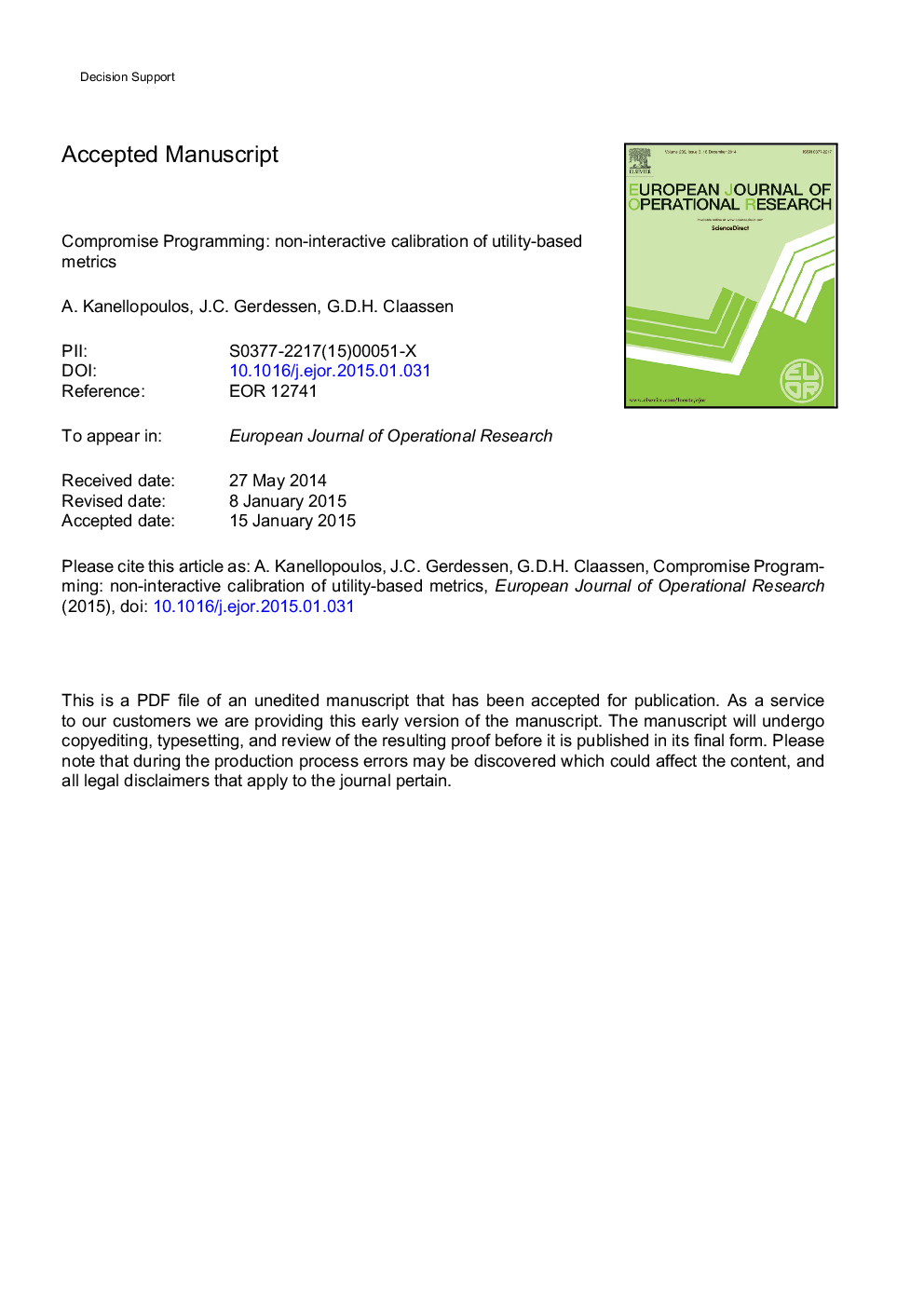| Article ID | Journal | Published Year | Pages | File Type |
|---|---|---|---|---|
| 6896601 | European Journal of Operational Research | 2015 | 24 Pages |
Abstract
Utility functions have been used widely to support multi-objective decision-making. Expansion of a general additive utility function around the ideal results in a composite linear-quadratic metric of a compromise programming problem. Determining the unknown parameters of the composite linear-quadratic metric requires substantial interaction with the decision maker who might not always be available or capable to participate in such a process. We propose a non-interactive method that uses information on observed attribute levels to obtain the unknown parameters of the composite linear-quadratic metric and enables forecasting and scenario analysis. The method is illustrated with a small scale numerical example.
Related Topics
Physical Sciences and Engineering
Computer Science
Computer Science (General)
Authors
A. Kanellopoulos, J.C. Gerdessen, G.D.H. Claassen,
